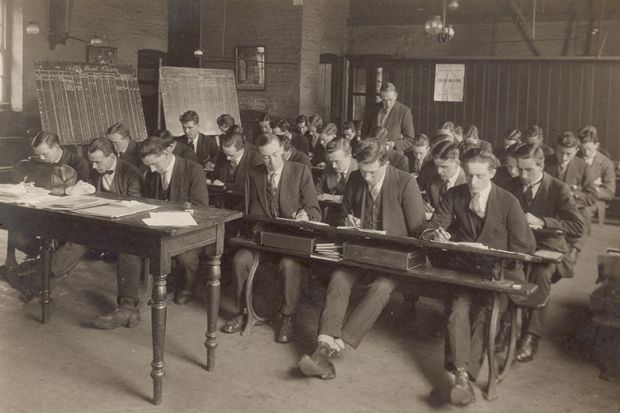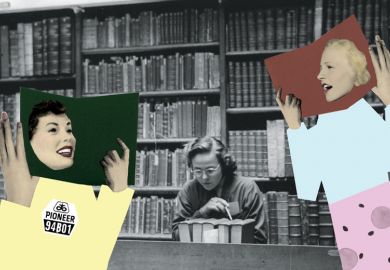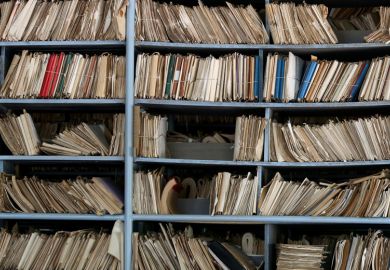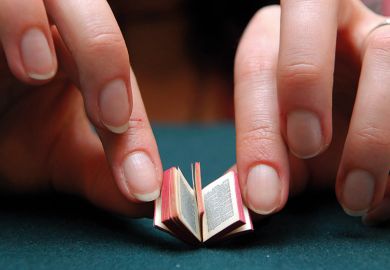University archivists must reflect far more on whose voices are excluded from their collections, even when they are addressing the history of their own institution, a conference has heard.
Speaking at the Discovering Collections, Discovering Communities conference in Birmingham, hosted by the National Archives and Research Libraries UK, Hannah Grout and Robin Sampson described their work on the University of the Arts London’s Institutional Memory project.
Sponsored by the communications department, the pair of assistant archivists were asked to “tell the story of the university”. What they found was “a legacy of non-inclusive collecting policies and repositories full of material biased by gender, race [and] sexual orientation”. Indeed, although there was plenty of documentation from the students’ union, “we rarely hear from operational staff, technicians, or indeed anyone who isn’t an administrator or an academic”, a paper by the pair says.
Given UAL’s “awareness of, and desire to tackle, society’s biases”, Ms Grout and Mr Sampson continue, they decided to abandon certain notions of “archival impartiality and neutrality” and consciously “fill in gaps in the institutional memory”. They therefore created an oral history project and provided “students from non-mainstream backgrounds” with bursaries to “create reflective pieces of work that expand upon their student journey and experiences, both positive and negative”.
“We as archivists may be the ‘authors’ of this collection, but we also have the opportunity to be activists,” the pair say.
Several other speakers described their efforts to broaden the scope of archives that have a traditionally white, male outlook. Samantha Callaghan, a metadata analyst at King’s College London who is working on a project to digitise around 425,000 pages of material from Great Britain’s Georgian court, said that she had been inspired by references to meetings with Indigenous people to work with networks including the International Indigenous Librarians Forum and the Indigenous matters section of the International Federation of Library Associations in order to provide the contextual information needed by researchers. Those working on the programme were also looking at opportunities to work with projects such as Treatied Spaces – a research cluster based at the University of Hull – with a view to “building their own relationships with North American Indigenous communities”.
Meanwhile, Simon Demissie of the Wellcome Collection and Alicia Chilcott of Conway Hall called for “targeted collections development and community archiving”. It was still common to find racially offensive language not only in the historic material held by archives but in the catalogues used to describe it, they said. The pair also warned of the dangers of “collections [that] only present African people within the context of slavery and colonialism”, thereby “upholding racist stereotypes in the present day” and “alienat[ing] huge numbers of people from engaging with archives”.
matthew.reisz@timeshighereducation.com
Archival project gives new life to Dolly the sheep
“It began in a very unpromising way,” said Joseph Marshall, head of special collections at the University of Edinburgh. “We had to get a van to go out to a big chicken shed where the archives were held and pack them up in about six inches of snow.”
He was describing what happened in 2009 when the Roslin Institute – most famous as the place where the first ever mammal, Dolly the sheep, was cloned in 1996 – became part of the university. Although such a scientific archive was something of a first for Edinburgh’s special collections, Mr Marshall explored the important impact it had made in a paper presented at the Discovering Collections, Discovering Communities conference.
“The key thing about the collection is that it shows where these iconic discoveries come from,” he told Times Higher Education before the event. “To the popular mind, the cloning of Dolly the sheep was just a sort of magic moment, almost like a brainwave, but it built on about 150 years of cumulative research. The records show that story – and it’s very much a human story.”
Furthermore, it had proved “enormously rewarding and stimulating to build relations with current scientists”. The archivists, according to Mr Marshall, gained “a much greater understanding of the scientific world, its personalities and networks. That has led to many other scientific archives coming our way.”
Outreach activities had included “artists coming to use the collection for inspiration” and student films on genetic themes being shown at the Edinburgh Festival.
Yet Mr Marshall believes that the dialogue stimulated by the Roslin collection has also changed the attitude of scientists.
“Many leading scientists are generating records which need to be preserved,” he claimed, “and they don’t necessarily know that archives and libraries can help them with that. We now understand the urgency a lot more and the potential benefits of engaging with people while they are still alive and active.”
POSTSCRIPT:
Print headline: Archivists must tell institutions’ untold histories, conference hears
Register to continue
Why register?
- Registration is free and only takes a moment
- Once registered, you can read 3 articles a month
- Sign up for our newsletter
Subscribe
Or subscribe for unlimited access to:
- Unlimited access to news, views, insights & reviews
- Digital editions
- Digital access to THE’s university and college rankings analysis
Already registered or a current subscriber?








